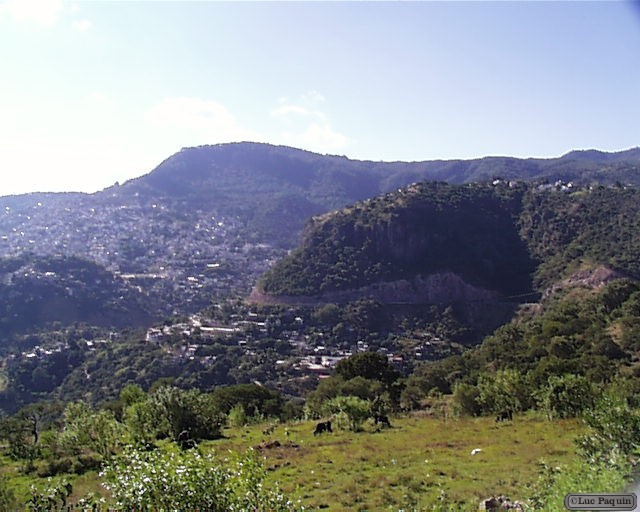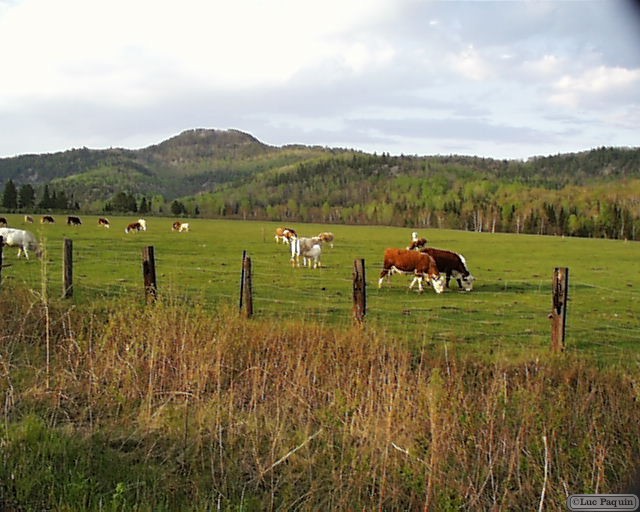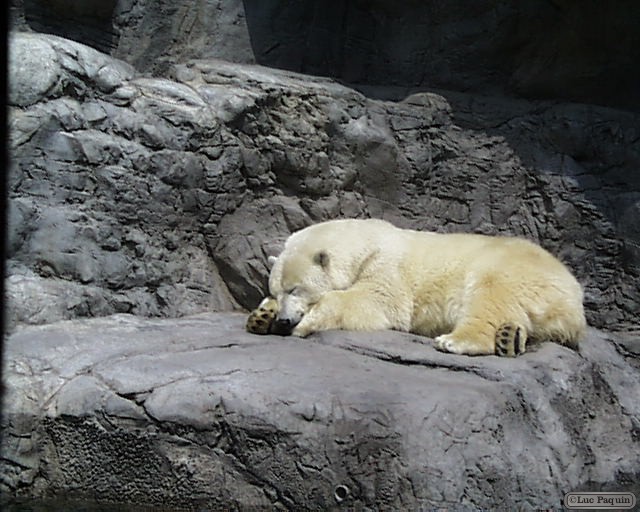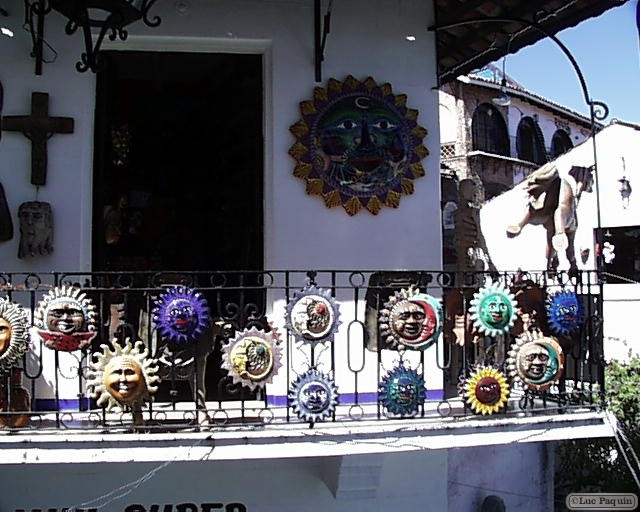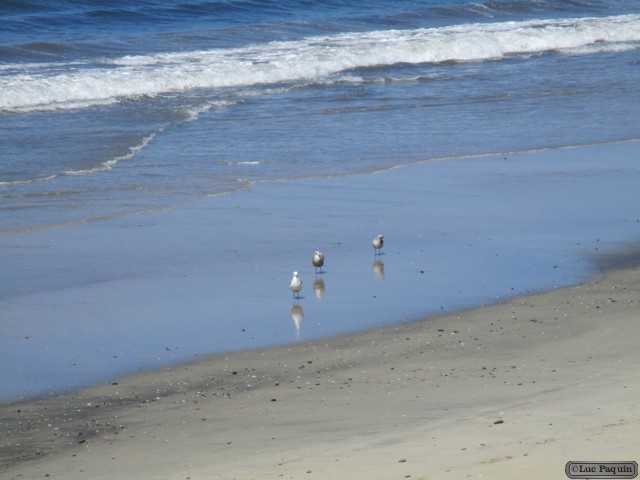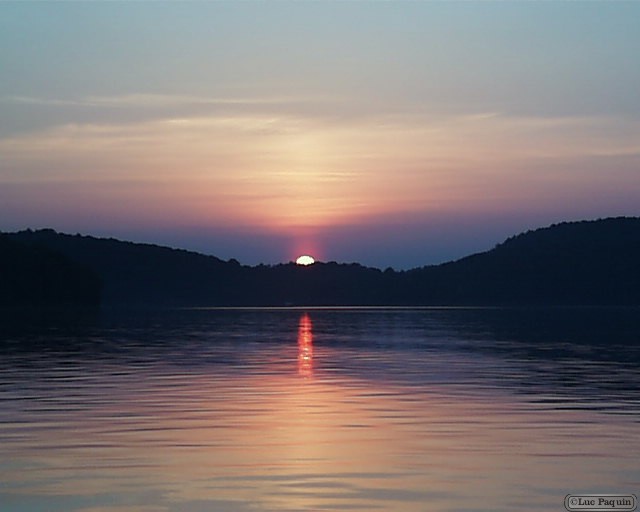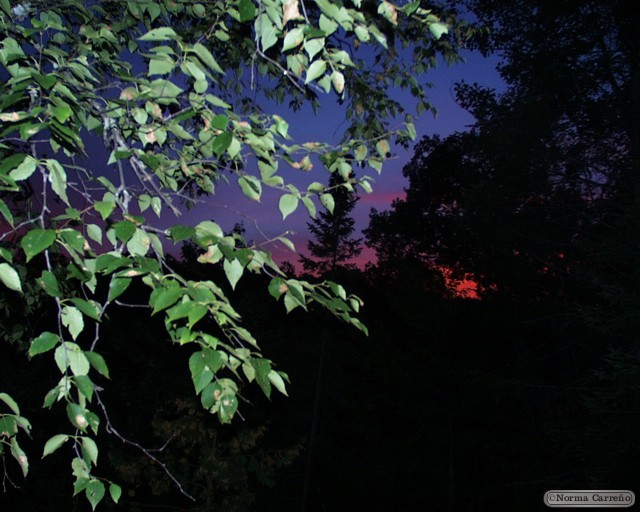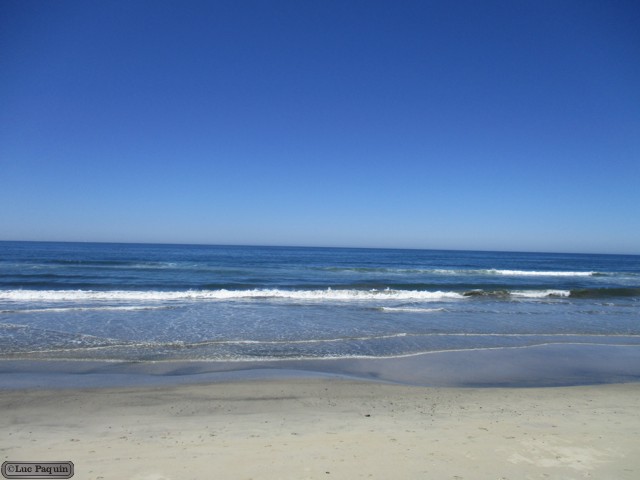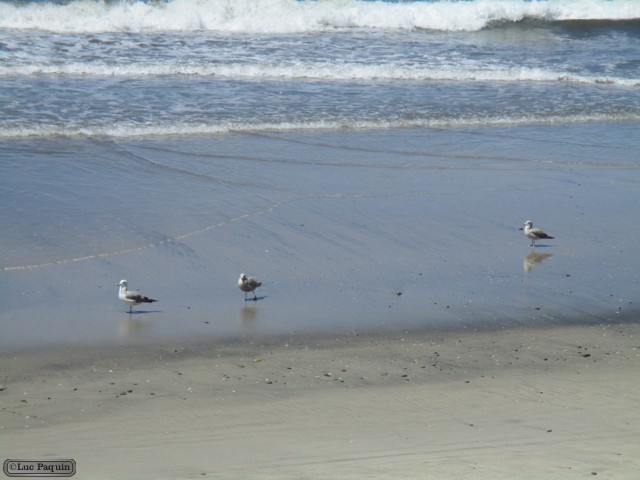Photo
Photos
Year: 2004 (March 18, 2004)
11″ x 8.5″
Media: Canon® Pro Platinum High Gloss Photo Paper
Printers: Canon® PIXMA
Color
Art: Photo
Artist: Luc Paquin
Mercado de Jamaica
Mercado Jamaica is one of Mexico City’s traditional public markets where various vendors sell their wares in an established location. This market was inaugurated in the 1950s as part of efforts to modernize the markets in the area. The market is located on the corner of Congreso de la Union and Avenida Morelos, just southeast of the historic center of the city. Although it is one of the main markets for groceries, produce and meat, it is best known for its flowers and ornamental plants. There are 1,150 stands dedicated to the selling of cut flowers, flower arrangements, ornamental plants and accessories such as flowerpots. The market offers about 5,000 types of flowers and plants, mostly foreign, but there is a number of native Mexican species available, including some gathered directly from the wild.
Mole
All mole preparations begin with one or more types of chili pepper. The classic moles of central Mexico and Oaxaca, such as mole poblano and mole negro, include two or more of the following types: ancho, pasilla, mulato and chipotle. Other ingredients can include black pepper, achiote, guaje, cumin, cloves, anise, tomatoes, tomatillos, garlic, sesame seeds, dried fruit, hoja santa and many others. Mole poblano has an average of 20 ingredients; mole almendrado has an average of 26, and Oaxacan moles can have over 30. Chocolate, if used, is added at the end of cooking. The ingredients of mole can be grouped into five distinct classes: chiles, sour (tomatillos), sweet (dried fruits and sugar), spices, and thickeners (nuts and tortillas).
Luc
Year: 2003 (November 2003)
11″ x 8.5″
Media: Canon® Pro Platinum High Gloss Photo Paper
Printers: Canon® PIXMA
Color
Art: Photo
Artist: Luc Paquin
Taxco
The climate ranges from hot and relatively moist in the flatlands to warm and relatively moist in the higher mountainous areas. Average temperatures for the year range between 18 and 20 C. Most of the municipality is covered in semi-tropical foliage which has a tendency to drop leaves during the dry season from October to May. In the highest elevations, pine and oak forests can be found.
The city of Taxco de Alarcón is the seat and the governing authority for 141 other communities, the largest of which are Tlamacazapa, Acamixtla, Acuitlalpan, Atzala and Taxco el Viejo. The total population of the municipality is 98,854, and the territory measures 347km2. Less than 3% of the population of the municipality is of pure indigenous ethnicity according to the Census. The two indigenous languages spoken here are Nahuatl and Zapotec. It borders with the municipalities of Tetipac, Iguala, Teloloapan, Buena Vista de Cuellar, Pedro Ascencio Alquisiras and Ixcateopan as well at the state of Puebla.
The terrain has an average altitude of 1,752 meters, which ranges from 1,000 meters to 2,300 meters. Seventy five percent of its territory consists of rugged mountains, twenty percent is semi-flat and only five percent is flat. The flatter lands are in the lower elevations. The major rivers here are the Taxco and the Temixco, with a number of arroyos that feed into them during the rainy season. There is a lake that is filled only part of the year and a small dam called San Marcos.
Most of the municipality’s natural resources lie underground in the form of gold, silver, lead, copper, and zinc deposits. Above ground a number of species of timber trees exist as well as areas for agriculture and livestock. Principle crops grown in the municipality are corn, peanuts, luffa sponges, beans and tomatillos. Livestock consists of pigs, goats, horses and some fowl. Most of the industry here revolves around mining precious metals as well as the manufacture of drywall and masonry materials.
Luc
Year: 2002 (May 2002)
11″ x 8.5″
Media: Canon® Pro Platinum High Gloss Photo Paper
Printers: Canon® PIXMA
Color
Art: Photo
Artist: Luc Paquin
Brébeuf
Brébeuf is a parish municipality in the Laurentides region of Quebec, Canada, part of Les Laurentides Regional County Municipality. It is located along the Rouge River (Rivière Rouge), near Mont-Tremblant.
Dairy cattle (also called dairy cows or milk cows) are cattle cows bred for the ability to produce large quantities of milk, from which dairy products are made. Dairy cows generally are of the species Bos taurus.
Historically, there was little distinction between dairy cattle and beef cattle, with the same stock often being used for both meat and milk production. Today, the bovine industry is more specialized and most dairy cattle have been bred to produce large volumes of milk.
Luc
Year: 2003 (October 30, 2003)
11″ x 8.5″
Media: Canon® Pro Platinum High Gloss Photo Paper
Printers: Canon® PIXMA
Color
Art: Photo
Artist: Luc Paquin
Zoológico de Chapultepec
Chapultepec Zoo is a zoo located in Chapultepec Park; it is one of four zoos near Mexico City, and the best known Mexican zoo. It was founded July 6, 1923 by Mexican biologist Alfonso Luis Herrera using donations from private citizens and governmental funds from the Ministry of Agriculture and Development, and also with funds from the Society of Biological Studies. The zoo is rather popular after a recent renovation begun in 1992 which took two years; estimates of its popularity range from 5.5 million visitors per year to as much as 8 million, who all come to see its large collection of almost 2000 animals from more 200 different species. It is the second largest zoo in Mexico after the Guadalajara Zoo in Guadalajara, Jalisco.
Polar bear
The polar bear (Ursus maritimus) is a carnivorous bear whose native range lies largely within the Arctic Circle, encompassing the Arctic Ocean, its surrounding seas and surrounding land masses. It is a large bear, approximately the same size as the omnivorous Kodiak bear (Ursus arctos middendorffi). A boar (adult male) weighs around 350-700 kg, while a sow (adult female) is about half that size. Although it is the sister species of the brown bear, it has evolved to occupy a narrower ecological niche, with many body characteristics adapted for cold temperatures, for moving across snow, ice, and open water, and for hunting the seals which make up most of its diet. Although most polar bears are born on land, they spend most of their time at sea. Their scientific name means “maritime bear”, and derives from this fact. Polar bears hunt their preferred food of seals from the edge of sea ice, often living off fat reserves when no sea ice is present.
The polar bear is classified as a vulnerable species, with eight of the nineteen polar bear subpopulations in decline. For decades, large scale hunting raised international concern for the future of the species but populations rebounded after controls and quotas began to take effect. For thousands of years, the polar bear has been a key figure in the material, spiritual, and cultural life of Arctic indigenous peoples, and polar bears remain important in their cultures.
Luc
Year: 2003 (November 2003)
11″ x 8.5″
Media: Canon® Pro Platinum High Gloss Photo Paper
Printers: Canon® PIXMA
Color
Art: Photo
Artist: Luc Paquin
Taxco
Taxco de Alarcón (usually referred to as simply “Taxco”) is a small city and administrative center of a municipality of the same name (Taxco de Alarcón) located in the Mexican state of Guerrero. The name Taxco is most likely derived from the Nahuatl word tlacheco, which means “place of the ballgame.” However, one interpretation has the name coming from the word tatzco which means “where the father of the water is,” due to the high waterfall near the town center on Atatzin Mountain. “De Alarcón” is in honor of writer Juan Ruiz de Alarcón who was a native of the town. Like many municipalities in central Mexico, the municipality’s coat-of-arms is an Aztec glyph. This glyph is in the shape of a Mesoamerican ballcourt with rings, players and skulls, derived from the most likely source of Taxco’s name.
The city is heavily associated with silver, both with the mining of it and other metals and for the crafting of it into jewelry, silverware and other items. This reputation, along with the city’s picturesque homes and surrounding landscapes have made tourism the main economic activity as the only large-scale mining operation here is coming to a close.
Taxco is located in the north-central part of the state, 36 kilometres from the city of Iguala, 135 km from the state capital of Chilpancingo and 170 km southwest of Mexico City. The city was named one of Mexico’s “Pueblos Mágicos” (Magical Towns) due to the quality of the silverwork, the colonial constructions and the surrounding scenery.
Luc
Year: 2015 (April 28, 2015)
11″ x 8.5″
Media: Canon® Pro Platinum High Gloss Photo Paper
Printers: Canon® PIXMA
Color
Art: Photo
Artist: Luc Paquin
A sea is a large body of salt water that is surrounded in whole or in part by land. More broadly, the sea is the interconnected system of the Earth’s salty, oceanic waters considered as one global ocean or as several principal oceanic divisions. The sea Pacific.
A beach is a landform along the coast of an ocean. It usually consists of loose particles, which are often composed of rock, such as sand, gravel, shingle, pebbles, or cobblestones. The particles comprising a beach are occasionally biological in origin, such as mollusc shells or coralline algae.
Some beaches have man-made infrastructure, such as lifeguard posts, changing rooms, and showers. They may also have hospitality venues (such as resorts, camps, hotels, and restaurants) nearby. Wild beaches, also known as undeveloped or undiscovered beaches, are not developed in this manner. Wild beaches can be valued for their untouched beauty and preserved nature.
Oceanside Pier, North Coast Highway, Oceanside, CA, USA.
Luc
Year: 2015 (April 28, 2015)
11″ x 8.5″
Media: Canon® Pro Platinum High Gloss Photo Paper
Printers: Canon® PIXMA
Color
Art: Photo
Artist: Luc Paquin
Gulls or seagulls are seabirds. They are most closely related to the terns and only distantly related to auks, skimmers, and more distantly to the waders. Gulls are typically medium to large birds, usually grey or white, often with black markings on the head or wings. They typically have harsh wailing or squawking calls, stout, longish bills, and webbed feet. Most gulls, particularly Larus species, are ground-nesting carnivores, which will take live food or scavenge opportunistically. Live food often includes crabs and small fish. Gulls have unhinging jaws which allow them to consume large prey. Apart from the kittiwakes, gulls are typically coastal or inland species, rarely venturing far out to sea. The large species take up to four years to attain full adult plumage, but two years is typical for small gulls. Large white-headed gulls are typically long-lived birds, with a maximum age of 49 years recorded for the herring gull.
Gulls nest in large, densely packed noisy colonies. They lay two to three speckled eggs in nests composed of vegetation. The young are precocial, being born with dark mottled down, and mobile upon hatching.
Gulls-the larger species in particular-are resourceful, inquisitive and intelligent birds, demonstrating complex methods of communication and a highly developed social structure. For example, many gull colonies display mobbing behaviour, attacking and harassing would-be predators and other intruders. Certain species (e.g. the herring gull) have exhibited tool use behaviour, using pieces of bread as bait with which to catch goldfish, for example. Many species of gull have learned to coexist successfully with humans and have thrived in human habitats. Others rely on kleptoparasitism to get their food. Gulls have been observed preying on live whales, landing on the whale as it surfaces to peck out pieces of flesh.
Oceanside Pier, North Coast Highway, Oceanside, CA, USA.
Luc

